Are you an adventure-seeker looking for your next challenge? Do you love the thrill of the great outdoors? Look no further than Everest Base Camp! Nestled in the heart of the Himalayas, this incredible destination offers unparalleled opportunities for hiking, trekking, and exploring.
Trekking
Trekking in Everest Base Camp is a once-in-a-lifetime adventure that combines stunning natural beauty, unique cultural experiences, and a physical challenge that will test your limits. It’s an experience that will leave you with memories to last a lifetime. The trek begins in the bustling city of Kathmandu, where you’ll have the chance to explore ancient temples and bustling markets and taste the delicious local cuisine.
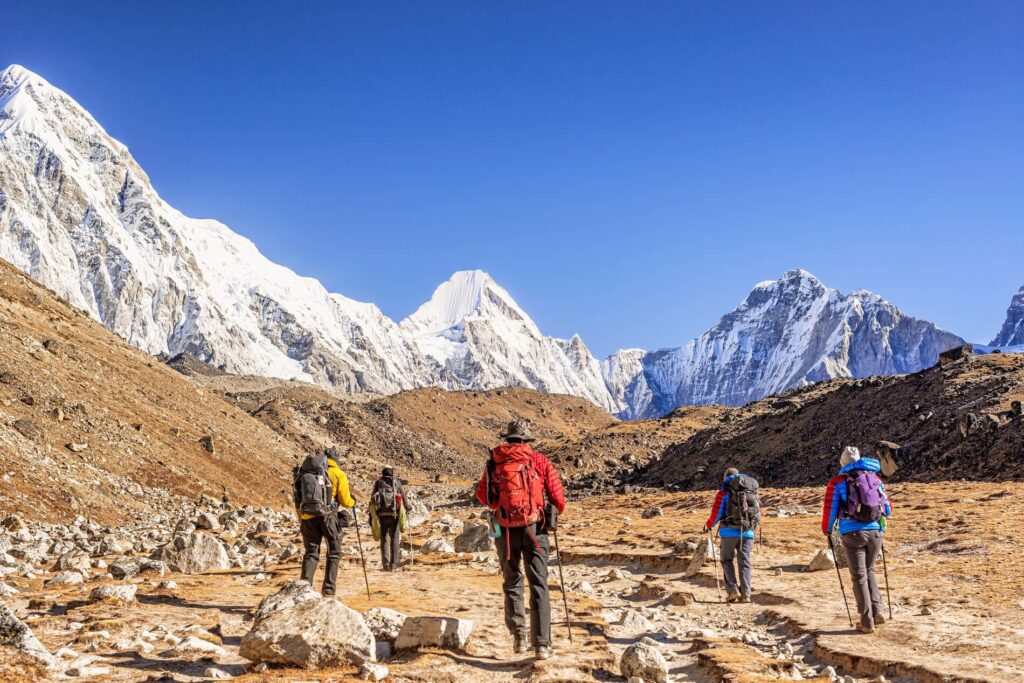
From there, you’ll fly to Lukla, a small mountain village that serves as the gateway to the Everest region. The trek itself is challenging but incredibly rewarding. You’ll hike through beautiful valleys, dense forests, and picturesque villages. Along the way, you’ll meet locals who have lived in the region for generations, and who have a unique perspective on the natural wonders and challenges of the region.
One of the most challenging parts of the trek is the altitude. As you ascend higher into the mountains, the air becomes thinner, making it more difficult to breathe. However, with proper acclimatization and careful pacing, you’ll be able to manage the altitude and continue your journey to Everest Base Camp.
Reaching Everest Base Camp is an incredible achievement
The camp itself is a bustling hub of activity, with climbers and trekkers from around the world preparing to climb the world’s highest peak. You’ll witness a sea of colorful prayer flags, and the sound of prayer wheels turning in the wind. But the real highlight of the trek is the stunning natural beauty of the Himalayas. You’ll be surrounded by towering peaks, with crystal-clear streams, snow-capped mountains, and stunning vistas around every turn. The sunrise over the mountains is particularly spectacular, with the snow-capped peaks glowing orange and pink in the early morning light.
Also Check: Clothing for the Everest Base Camp Trek: A Comprehensive Guide
One of the most memorable experiences of the trek is the sense of camaraderie that develops among trekkers. You’ll meet people from all walks of life, united by a shared sense of adventure and the desire to experience the natural wonders of the Himalayas. You’ll make lifelong friends and share unforgettable experiences that you’ll cherish forever.
Mountain Climbing
If you’re looking for an adventure of a lifetime, there’s nothing quite like climbing to Everest Base Camp. The world’s tallest mountain is a challenge that requires determination, courage, and a deep appreciation for the natural beauty that surrounds us.

The adventure begins in Kathmandu, Nepal, where you’ll meet your guide and fellow climbers. From there, you’ll take a breathtaking flight to Lukla, a small town nestled in the Himalayas. The trek to Everest Base Camp is not for the faint of heart. The path is steep and rocky, and the altitude can make breathing difficult. But as you climb higher, the view becomes more and more stunning. You’ll pass through charming Sherpa villages, prayer flags fluttering in the wind, and ancient monasteries where you can pause to reflect.
As you approach Base Camp, you’ll begin to see the towering peak of Everest in the distance. The feeling of awe and inspiration is indescribable. You’ll spend a few days acclimating to the altitude, hiking to nearby viewpoints, and getting to know your fellow climbers.
Photography
The Everest Base Camp is one of the most iconic and breathtaking destinations in the world. It’s a place that draws adventurers and photographers alike, eager to capture the majesty and awe-inspiring beauty of the Himalayas. For photographers, there’s no shortage of opportunities to capture stunning images of the world’s tallest peak, Mount Everest. Let’s talk about the best times to capture stunning images of Everest.
The best time of year to visit Everest Base Camp is during the spring months of March to May or in the fall from September to November. During these months, the weather is usually clear and sunny, with the best visibility for photographing the peaks. The skies are often a brilliant shade of blue, and the surrounding mountains offer a dramatic contrast to the white snow-capped peaks.
One of the most popular shots is the classic sunrise or sunset shot, capturing the pink and orange hues of the sky as the sun rises or sets behind the mountain range. Another thing to consider is the weather conditions. The unpredictable and ever-changing weather in the Himalayas can make for some dramatic and moody shots, especially when the clouds are low and rolling over the peaks. A misty morning can be just as beautiful as a clear one, so keep an eye out for weather patterns and be prepared to capture the beauty of the mountain in all its moods.
Visit Monasteries
The Everest Base Camp Trek is a popular adventure that offers stunning views of the Himalayas and a chance to experience the culture of the Sherpa people. The journey also provides an opportunity to visit some of the most significant monasteries in the region.
Also Read: Food and Accommodation on Everest Base Camp Trek
The monasteries of the Everest region are an important part of the local culture and religion. They serve as centers of learning, meditation, and worship for the Sherpa people, who have inhabited this region for centuries. The monasteries are also home to some of the most important artifacts and relics in the Buddhist religion, making them a fascinating destination for those interested in spirituality and history.
Here are some of the most significant monasteries that you can visit during your Everest Base Camp trek:
Tengboche Monastery
Tengboche Monastery is one of the largest and most important monasteries in the Everest region. It is located at an altitude of 3,867 meters and is surrounded by stunning views of the Himalayas. The monastery was originally built in 1916 but was destroyed by an earthquake in 1934.
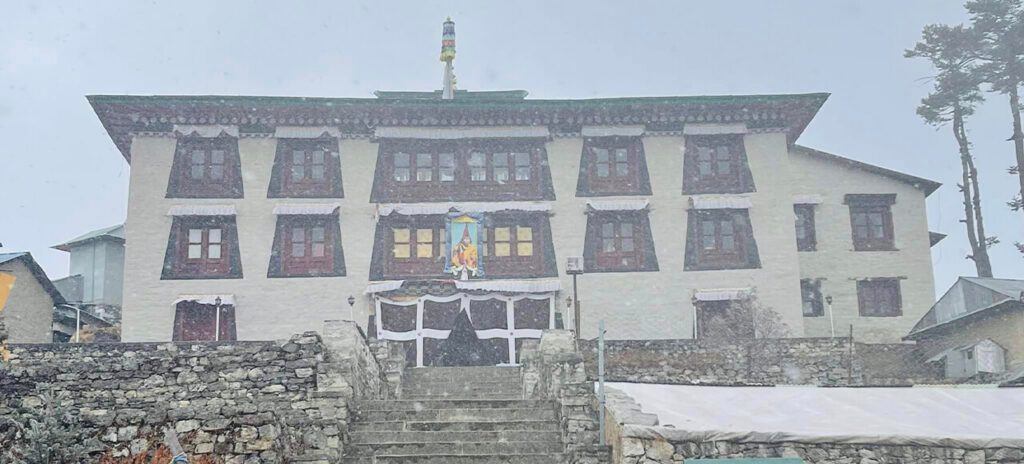
It was later rebuilt and now serves as the spiritual center of the Khumbu region.
Pangboche Monastery
Pangboche Monastery is another significant monastery in the Everest region. It is located at an altitude of 3,985 meters and is said to be the oldest monastery in the Khumbu region. The monastery is home to a sacred relic called the scalp of a Yeti, which is believed to be the only one in existence.
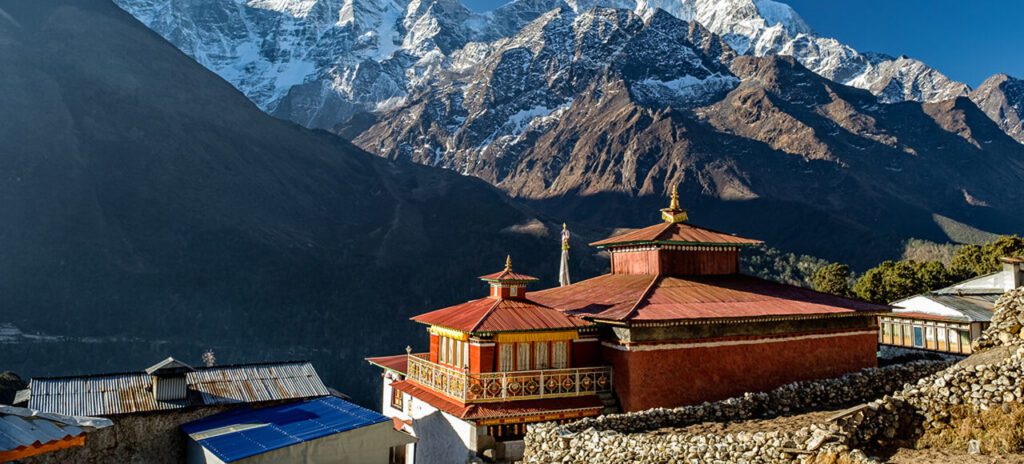
Visitors to the monastery can witness the daily prayer ceremonies and also explore the surrounding area, which is filled with stunning views of the mountains and traditional Sherpa villages.
Khumjung Monastery
Khumjung Monastery is a small but significant monastery located in the village of Khumjung. It is located at an altitude of 3,790 meters and is home to a statue of Guru Rinpoche, one of the most important figures in Tibetan Buddhism.
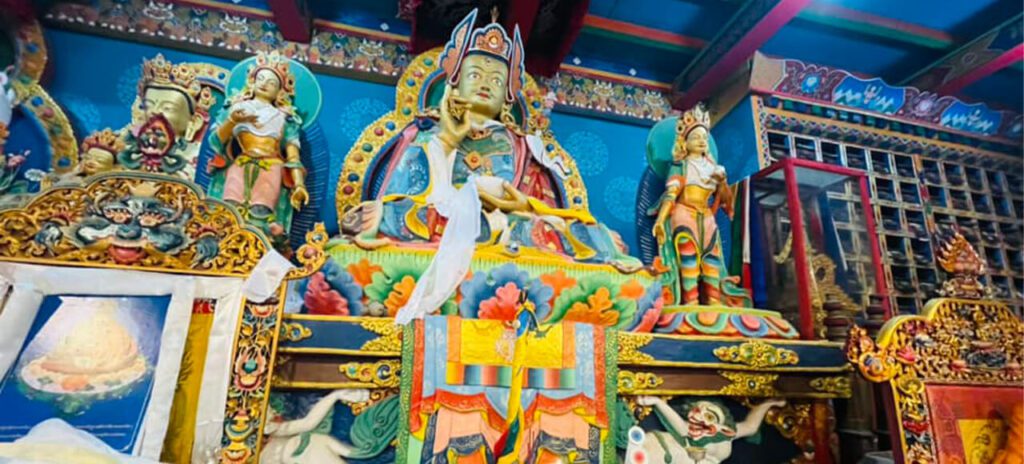
The monastery also houses a collection of ancient manuscripts and relics and serves as a center of learning for the local Sherpa people. Visitors can witness the daily prayer ceremonies and explore the village, which is known for its traditional architecture and friendly locals.
Learning about Sherpa Culture
If you are interested in learning about Sherpa culture, then a trek to Everest Base Camp can be an eye-opening experience. The Sherpa people are an ethnic group that originated in Tibet and migrated to Nepal several hundred years ago. They are known for their incredible mountaineering skills and have been instrumental in the success of many expeditions to Everest. But the Sherpa culture is much more than just climbing mountains.
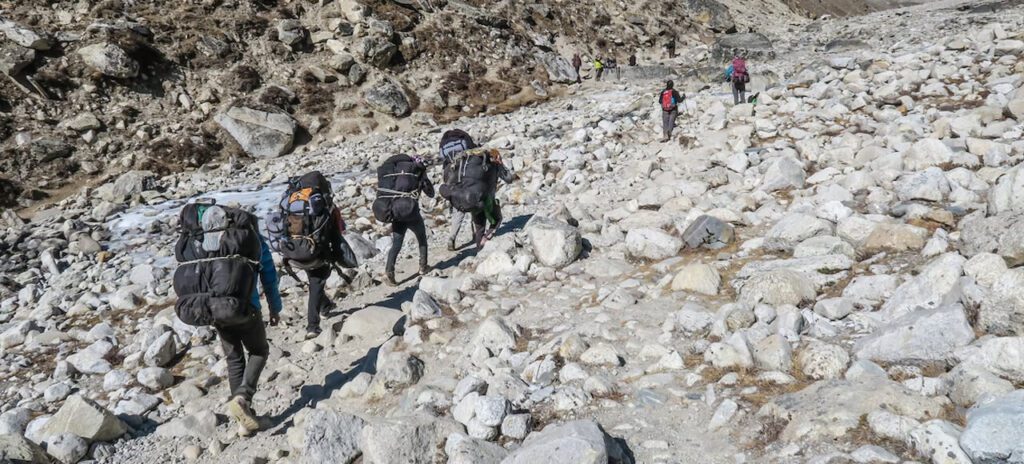
During your trek to Everest Base Camp, you will have the opportunity to visit several Sherpa villages and learn about their way of life. Sherpas are Buddhists, and you will see many colorful prayer flags, chortens, and mani walls as you make your way through the region. You may also have the opportunity to visit a monastery and witness a prayer ceremony. One of the most memorable experiences of learning about Sherpa culture is trying the local food. The Sherpa diet is simple but nutritious, consisting mostly of potatoes, rice, lentils, and vegetables. You will also have the chance to try Sherpa stew, which is made with yak meat and is a staple of the Sherpa diet.
Clothing and Traditional Crafts
In addition to food, you will also learn about Sherpa clothing and traditional crafts. Sherpa women are skilled weavers and produce beautiful handmade textiles. You may have the opportunity to visit a workshop and see the weaving process in action. Sherpa clothing is also unique, with brightly colored hats, scarves, and jackets.

Perhaps the most inspiring aspect of Sherpa culture is their strong sense of community and respect for the environment. The Sherpa people have a deep reverence for the mountains and believe that they are sacred. They also have a strong commitment to preserving the environment for future generations.
Explore the Khumbu Glacier
Nestled in the heart of the Himalayas, the Khumbu Glacier is one of the most stunning and awe-inspiring natural wonders on Earth. Located in the Khumbu region of Nepal, this glacier stretches for over 17 miles and is the source of the mighty Dudh Koshi River. Exploring Khumbu Glacier is an experience like no other. From the breathtaking views of the surrounding mountains to the vast expanse of ice, there is no shortage of beauty to behold. Here is a guide to exploring this natural wonder:
Getting There
The journey to Khumbu Glacier starts with a flight from Kathmandu to Lukla. This flight is not for the faint of heart, as the airport in Lukla is widely regarded as one of the most dangerous in the world. However, once you land safely in Lukla, the real adventure begins.
The trek to Khumbu Glacier takes about 10 days, and you will pass through some of the most stunning scenery in the world. You will trek through lush forests, cross high-suspension bridges, and pass through small mountain villages. As you make your way higher into the mountains, you will start to feel the altitude, so it is important to take your time and acclimatize properly.
The Trek
The trek to Khumbu Glacier is challenging, but it is also one of the most rewarding experiences you can have. Along the way, you will see some of the most famous landmarks in the Himalayas, including Namche Bazaar, Tengboche Monastery, and Gorak Shep.
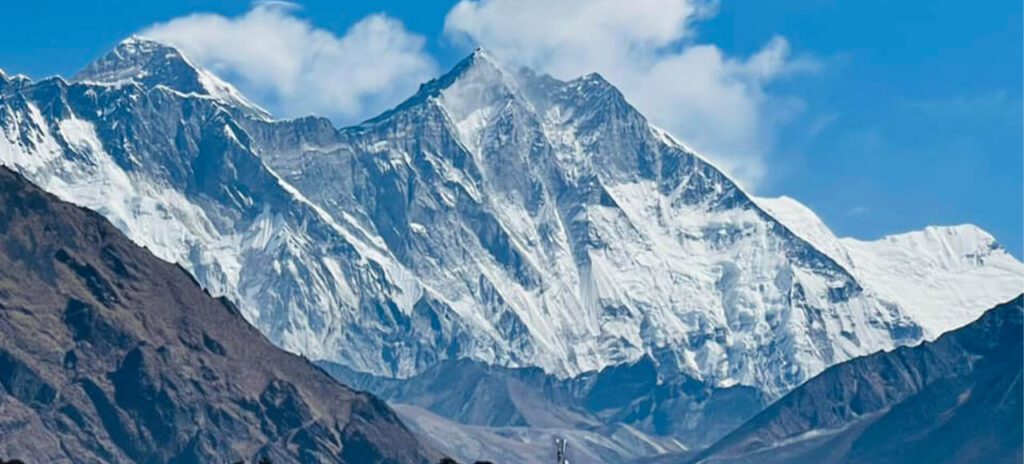
As you get closer to the glacier, the terrain becomes more rugged and barren. The final stretch of the trek takes you through the Khumbu Icefall, which is one of the most treacherous parts of the journey. The icefall is constantly moving and changing, so it is essential to have an experienced guide to navigate the way.
Exploring the Glacier
Once you arrive at Khumbu Glacier, you will be rewarded with a view that will take your breath away. The glacier is a massive river of ice, and the sound of the ice cracking and shifting is both eerie and beautiful. Exploring the glacier is not for the faint of heart. The terrain is treacherous, and the ice can be unstable. However, if you have an experienced guide, you can explore some of the most incredible ice formations in the world, including ice caves, crevasses, etc.
It is also possible to climb some of the surrounding peaks, including Island Peak and Lobuche Peak. These climbs are not for beginners, and it is essential to have proper training and equipment.
Hike to Kala Patthar
If you’re looking for a thrilling adventure, then look no further than the hike to Kala Patthar in the Everest Base Camp! This stunning trek will take you through some of the most breathtaking landscapes in the world and give you an up-close view of the world’s highest peak, Mount Everest. The journey to Kala Patthar begins in the small village of Lukla, where you’ll fly in on a small plane that lands on a narrow and short runway. From there, you’ll embark on a multi-day trek through the Himalayan mountains, passing through small villages and crossing suspension bridges over deep gorges.
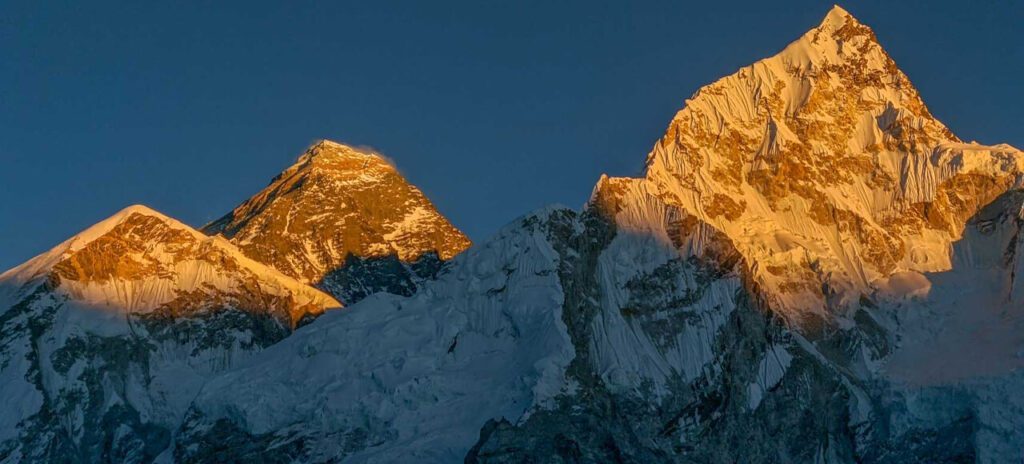
The trail to Kala Patthar can be steep and challenging, but the stunning views along the way are well worth the effort. As you ascend higher and higher, you’ll be rewarded with breathtaking views of the surrounding peaks, including Ama Dablam, Lhotse, and of course, Mount Everest. At the summit of Kala Patthar, you’ll be standing at an elevation of 5,545 meters (18,192 feet) and have an unparalleled view of the world’s highest peak. The panoramic view from the summit of Kala Patthar is truly awe-inspiring and worth every step of the climb.
But the journey to Kala Patthar is not just about the stunning views. Along the way, you’ll also have the opportunity to immerse yourself in the local culture and meet the friendly Sherpa people who call this region home. You’ll have the chance to explore the colorful monasteries and prayer flags that dot the landscape and learn about the Sherpa’s unique way of life.
Star Gazing
There are few experiences more awe-inspiring than gazing up at the stars on a clear night in the high mountains. And there is no better place to do it than at the Everest Base Camp, nestled in the heart of the Himalayas.
As you make your way up the winding trail to Everest Base Camp, the crisp mountain air fills your lungs and your eyes are filled with breathtaking views of towering peaks and glaciers. But as the sun sets and darkness descends, a new world emerges above you.
The stars in the sky above Everest Base Camp are unlike any you’ve ever seen. With little to no light pollution in the area, the night sky is a glittering expanse of stars and constellations that seem close enough to touch. The Milky Way stretches across the sky like a ribbon, and shooting stars streak across the heavens with incredible frequency. The quiet stillness of the night is broken only by the occasional distant howl of a mountain wolf or the gentle rustling of the wind. The only light comes from the stars above, casting an otherworldly glow across the landscape. It’s a humbling, yet thrilling experience that fills you with a sense of wonder and gratitude.
Enjoy Local Cuisine
There’s another reason to visit Everest Base Camp: the local cuisine. Despite its remote location, the Base Camp offers a surprisingly diverse range of food options, showcasing the unique flavors and ingredients of the Himalayan region. One of the most popular dishes at the Base Camp is momos, a type of dumpling filled with meat, vegetables, or cheese. These tasty treats are a staple of Nepali cuisine and can be found in tea houses and restaurants throughout the region. They’re usually served steamed or fried and are often accompanied by a spicy dipping sauce.

Another popular dish is Thukpa, a hearty noodle soup made with vegetables, meat, or seafood. This dish is particularly popular among trekkers, as it provides a warm and filling meal after a long day of hiking. Thukpa can be found in many tea houses along the trekking route to Base Camp. For those looking for something a bit more adventurous, yak meat is a popular protein option in the region. Yak meat is lean and flavorful and can be prepared in a variety of ways, from grilled yak steaks to yak burgers. The meat is often served with local vegetables and rice.
Of course, no trip to Everest Base Camp would be complete without trying the local tea. Butter tea, also known as po cha, is a staple of Himalayan culture and is made by mixing tea leaves with butter and salt. The result is a rich, creamy drink that provides warmth and sustenance in the cold mountain climate.
Explore Flora and Fauna
While the trek is known for its stunning views of the highest mountain in the world, it is also home to a diverse range of flora and fauna that makes the trek all the more special. As you trek through the Khumbu region, you will come across a variety of plant species, from dwarf rhododendrons and junipers to various types of wildflowers. The trek begins in Lukla, where you’ll see colorful prayer flags and mani stones, which are engraved with Buddhist prayers and are considered to have spiritual significance. The trail leads you through dense forests, alongside glacier-fed rivers, and over high suspension bridges, providing ample opportunities to encounter the local flora.

One of the highlights of the trek is the Sagarmatha National Park, which is a UNESCO World Heritage site. The park is home to a range of rare and endangered animal species, including the snow leopard, Himalayan black bear, red panda, and musk deer. While it is rare to spot these elusive creatures, the park is also home to a variety of birds, including the Himalayan monal, pheasants, and snow cock. As you make your way toward Everest Base Camp, the landscape becomes increasingly barren, with rocky terrain and snow-capped peaks dominating the horizon. However, even at high altitudes, you can still spot hardy plant species like mosses, lichens, and alpine flowers.






